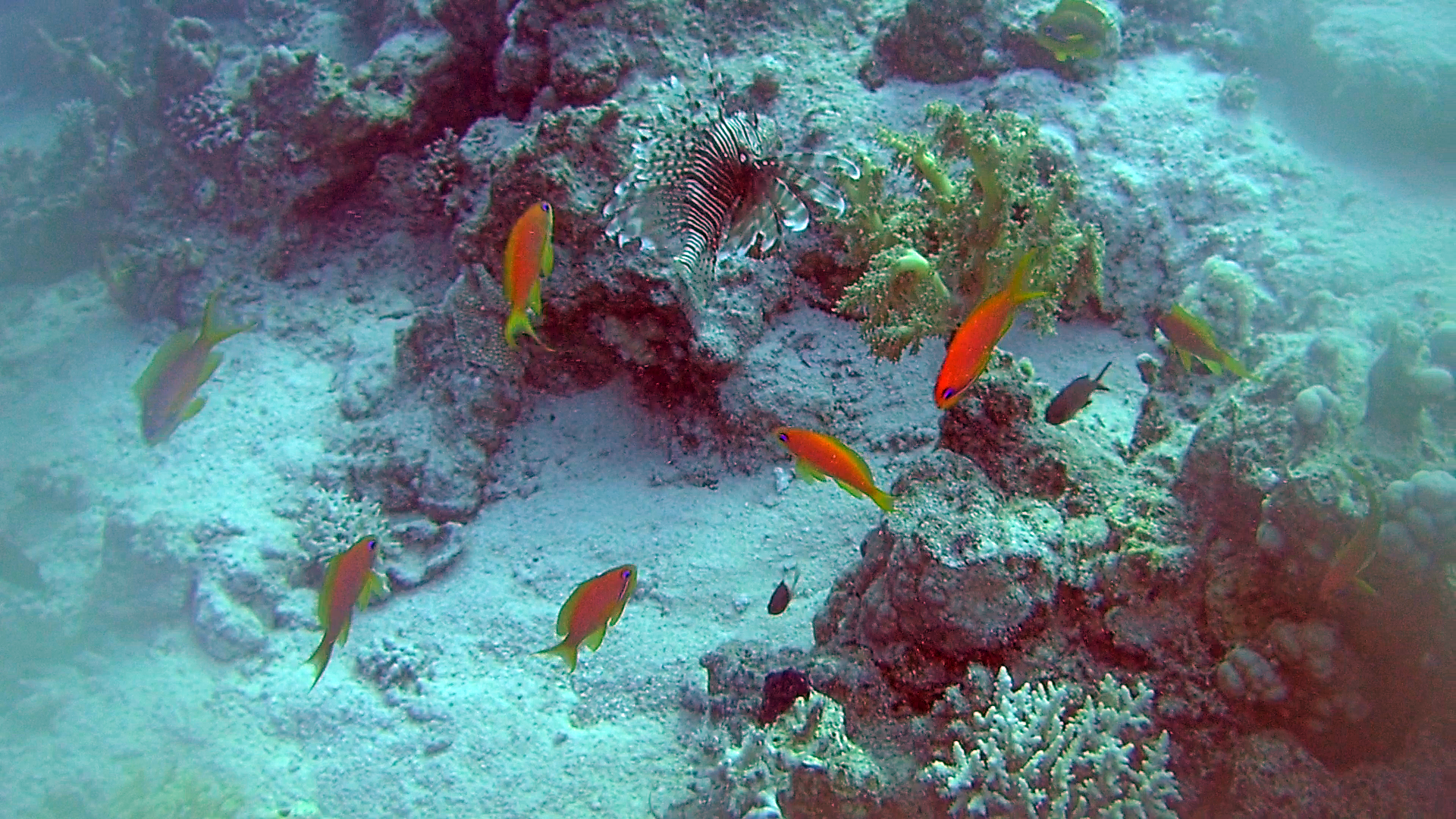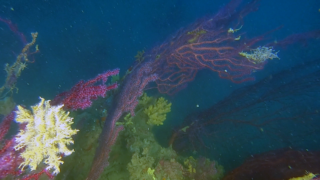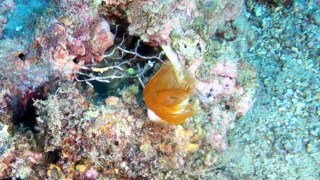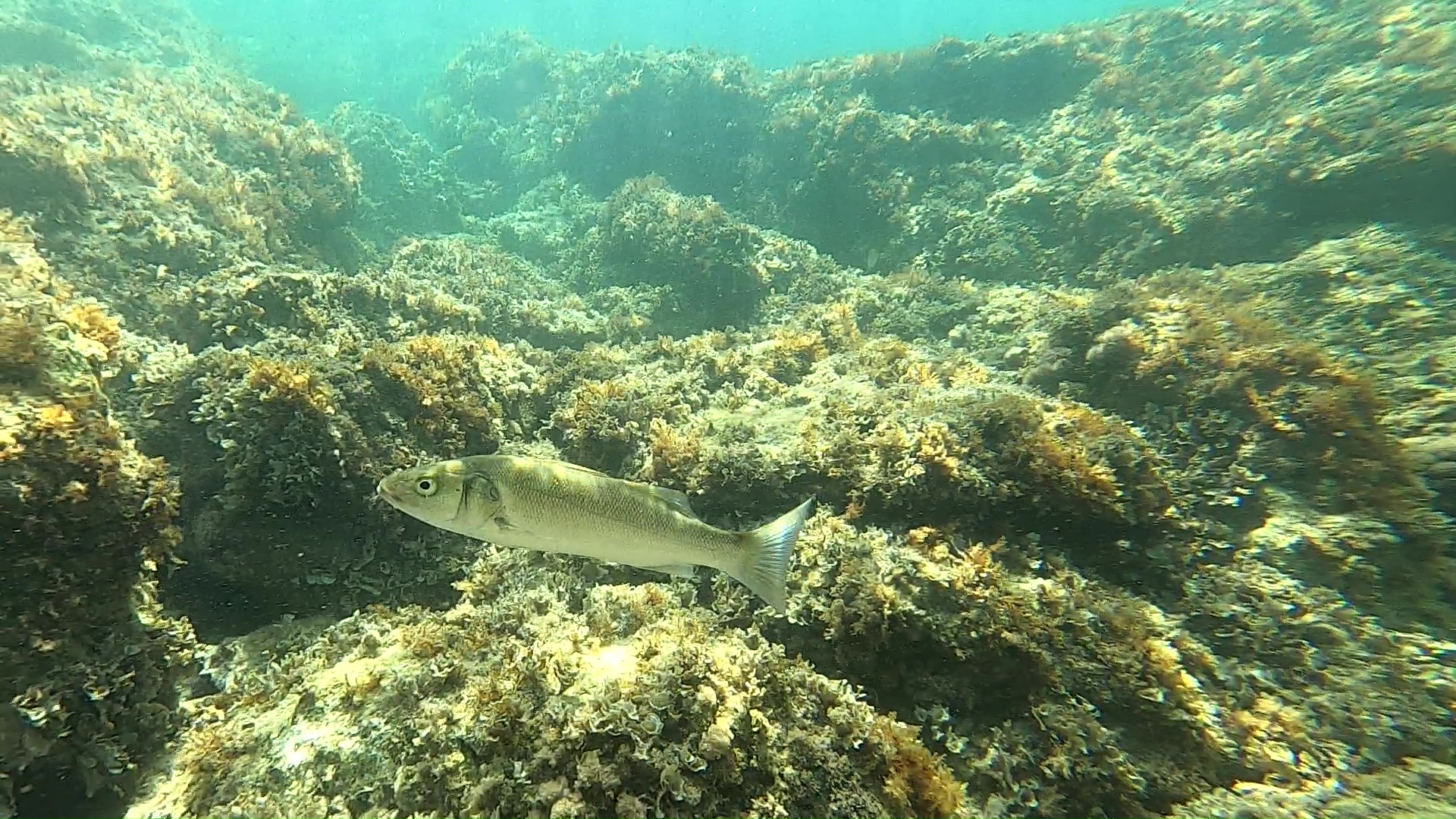The Red Lionfish (Pterois volitans) is a fish venomous who live coral reef in the family Scorpaenidae, order Scorpaeniformes. Pterois volitansis natively found in the Indo-Pacific region, but has become an invasive problem in the Carribbean Sea, as well as along the East Coast of the United States. Red lionfish are clad in white stripes alternated with red/maroon/brown stripes. Adults in this species can grow as large as 38 cm in length, making it one of the largest species of lionfish in the ocean. The average red lionfish lives around 10 years. As with many species within the family Scopaenidae, it has large, venomous spines that protrude from the body, similar to a mane, giving it the common name lionfish. The venomous spines make the fish inedible or deter most potential predator. Lionfish reproduce monthly and are able to quickly disperse during their larval stage for expansion of their invasive region. No definitive predators of the lionfish are known, and many organizations are promoting the harvest and consumption of lionfish in efforts to prevent further increases in the already high population densities. il pesce leone

Pesce Leone – Pesce Scorpione – Pterois volitans – Red Lionfish – intotheblue.it
The Red Lionfish live in the coral reefs of tropical seas. Coral reefs deliver ecosystem services for tourism, fisheries and shoreline protection. Coral reefs are fragile, partly because they are sensitive to water conditions. They are under threat from excess nutrients (nitrogen and phosphorus), rising temperatures, oceanic acidification, overfishing (e.g., from blast, fishing, cyanide fishing, spearfishing on), sunscreen use, and harmful land-use practices, including runoff and seeps (e.g., from injection wells and cesspools). Over 4,000 species of fish inhabit coral reefs. The reasons for this diversity remain unclear. Hypotheses include the “lottery”, in which the first (lucky winner) recruit to a territory is typically able to defend it against latecomers, “competition”, in which adults compete for territory, and less-competitive species must be able to survive in poorer habitat, and “predation”, in which population size is a function of postsettlement piscivore mortality. Healthy reefs can produce up to 35 tons of fish per square kilometer each year, but damaged reefs produce much less. il pesce leone
(extract from Wikipedia)
 English
English Italiano
Italiano



